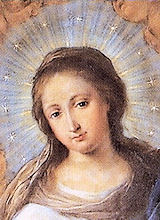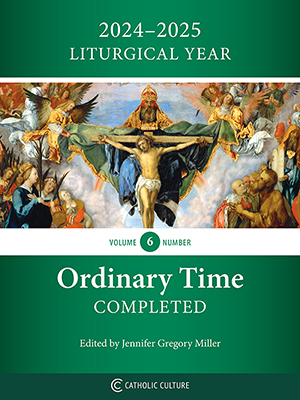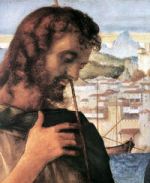May 2021 - Overview for the Month
The month of May is dedicated to The Blessed Virgin Mary. The first 23 days fall within the liturgical season of Easter, which is represented by the liturgical color white — the color of light, a symbol of joy, purity and innocence (absolute or restored). The remainder of the month (beginning the Monday after Pentecost) is in Ordinary Time which is represented by the liturgical color green. This symbol of hope is the color of the sprouting seed and arouses in the faithful the hope of reaping the eternal harvest of heaven, especially the hope of a glorious resurrection.
The World of Finance
Let us pray that those in charge of finance will work with governments to regulate the financial sphere and protect citizens from its dangers.
(See also Pope's Worldwide Prayer Network)
The feasts on the General Roman Calendar celebrated during the month of May are:
1.Joseph the Worker, Opt. Mem.
2.FIFTH SUNDAY OF EASTER, Sunday
3.Philip and James, Apostles, Feast
9.SIXTH SUNDAY IN ORDINARY TIME, Sunday
10.Damien de Veuster (USA); John of Avila, Opt. Mem.
12.Nereus and Achilleus; Pancras, Martyrs, Opt. Mem.
13.Our Lady of Fatima, Opt. Mem.
14.Matthias, Apostle, Feast
15.Isidore the Farmer (USA), Opt. Mem.
16.ASCENSION SUNDAY or the SEVENTH SUNDAY OF EASTER, Solemnity
18.John I, Opt. Mem.
20.Bernardine of Siena, Opt. Mem.
21.Christopher Magallanes & Companions, Opt. Mem.
22.Rita of Cascia, Opt. Mem.
23.PENTECOST, Solemnity
25.Bede; Gregory VII; Mary Magdalene de Pazzi, Opt. Mem.
26.Philip Neri; Minor Rogation Day, Memorial
27.Augustine of Canterbury; Minor Rogation Day, Opt. Mem.
30.TRINITY SUNDAY, Solemnity
31.Visitation of the Blessed Virgin Mary, Feast
The Gospel readings for all the Sundays in May are taken from St. John and and St. Matthew and are from Year B, Cycle 1.
May
2nd - 5th Sunday of Easter |
In today's Gospel Jesus says He is the vine and we are the branches. |
May
9th - 6th Sunday of Easter |
Christ gives the commandment to love as He loves. |
May
16th - Ascension or 7th Sunday of Easter |
Jesus tells his disciples to preach the Gospel to the whole world. |
May
23rd - Pentecost Sunday |
In this Gospel Jesus gives His disciples the power to forgive sins. |
May
30th - Trinity Sunday |
Jesus tells the apostles to "Go and make disciples of all nations, baptizing them in the name of the Father and of the Son and of the Holy Spirit." |
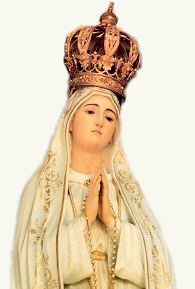 As
Spring blossoms forth and we are surrounded by new life, we spend
this month full of the joy of our Easter celebration and in anticipation
of the coming of the Holy Spirit, our Consoler and Advocate.
As
Spring blossoms forth and we are surrounded by new life, we spend
this month full of the joy of our Easter celebration and in anticipation
of the coming of the Holy Spirit, our Consoler and Advocate.
The saints that we will focus on this month — those who have already shared in the rewards of the Resurrection — are St. Joseph the Worker (May 1), Sts. Philip and James (May 3), St. Damian the Leper (May 10), St. Nereus & Achilleus, St. Pancras (May 12), Our Lady of Fatima (May 13), St. Matthias (May 14), St. Isidore the Farmer (May 15), St. John I (May 18), St. Bernadine of Siena (May 20), St. Christopher Magallanes (May 21), St. Rita of Cascia (May 22), St. Bede, St. Gregory VII and St. Mary Magdalene de Pazzi (May 25), St. Philip Neri (May 26), St. Augustine of Canterbury (May 27) and the Visitation (May 31).
The feasts of St. Athanasius (May 2) is superseded by the Sunday liturgy. The Solemnity of the Ascension (May 13) is celebrated on May 16 (Sunday) in most dioceses in the United States.
 The
world is resplendent with Spring's increased light and new growth.
It is Mary’s month in the Easter season and all of nature
rejoices with the Queen of heaven at the Resurrection of the Son
she was worthy to bear. During the remainder of Easter time, let
us endeavor through the prayers of the Holy Liturgy and the Holy
Rosary to deepen our gratitude for the mystery of our Baptismal
rebirth in Christ.
The
world is resplendent with Spring's increased light and new growth.
It is Mary’s month in the Easter season and all of nature
rejoices with the Queen of heaven at the Resurrection of the Son
she was worthy to bear. During the remainder of Easter time, let
us endeavor through the prayers of the Holy Liturgy and the Holy
Rosary to deepen our gratitude for the mystery of our Baptismal
rebirth in Christ.
"The month of May, with its profusion of blooms was adopted by the Church in the eighteenth century as a celebration of the flowering of Mary's maidenly spirituality…With its origins in Isaiah's prophecy of the Virgin birth of the Messiah under the figure of the Blossoming Rod or Root of Jesse, the flower symbolism of Mary was extended by the Church Fathers, and in the liturgy, by applying to her the flower figures of the Sapiential Books-Canticles, Wisdom, Proverbs and Sirach.
"In the medieval period, the rose was adopted as the flower symbol of the Virgin Birth, as expressed in Dante's phrase, 'The Rose wherein the Divine Word was made flesh,' and depicted in the central rose windows of the great gothic cathedrals-from which came the Christmas carol, 'Lo, How a Rose 'ere Blooming.' Also, in the medieval period, when monasteries were the centers of horticultural and agricultural knowledge, and with the spread of the Fransiscan love of nature, the actual flowers themselves, of the fields, waysides and gardens, came to be seen as symbols of Mary…" – John S. Stokes
Pentecost, the birth of the Church, is also among the celebrations of May. Though sprung from the side of Christ on the Cross, the Church marks as her birthday the descent of the Holy Spirit on Mary and the Apostles. At the 'birth' of the world, the Holy Spirit — the Breath of God — was the "mighty wind [that] swept over the waters" (Gen 1:2); at the birth of the Church He is present again "like the rush of a mighty wind" to recreate the world in the image of Christ through His Church (Acts 2:2).
We, the members of Christ’s Mystical Body, are the present-day disciples sent by the Holy Spirit to bring Christ to the world. May we go forth as did Mary, who set out in haste to assist St. Elizabeth (feast of the Visitation, May 31). Come upon us, O Holy Spirit, so that, with Mary, we may proclaim the greatness of the Lord who has done great things for us — for his mercy endures forever!
 "In
the hierarchy of holiness it is precisely the 'woman', Mary
of Nazareth, who is the 'figure' of the Church. She 'precedes'
everyone on the path to holiness; in her person 'the Church
has already reached that perfection whereby she exists without
spot or wrinkle'". — JOHN PAUL II Mulieris Dignitatem,
1988
"In
the hierarchy of holiness it is precisely the 'woman', Mary
of Nazareth, who is the 'figure' of the Church. She 'precedes'
everyone on the path to holiness; in her person 'the Church
has already reached that perfection whereby she exists without
spot or wrinkle'". — JOHN PAUL II Mulieris Dignitatem,
1988


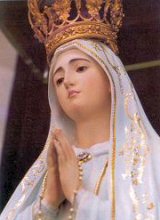
 The
whole universe is invited to acclaim the glories of the Ascending
Christ. He is surrounded with the just of Limbo, with the souls
who had finished their purgatorial expiation and probably with the
saints who came out of their tombs on Easter Sunday: "Ascending
on high He has led captivity captive".
The
whole universe is invited to acclaim the glories of the Ascending
Christ. He is surrounded with the just of Limbo, with the souls
who had finished their purgatorial expiation and probably with the
saints who came out of their tombs on Easter Sunday: "Ascending
on high He has led captivity captive". 





